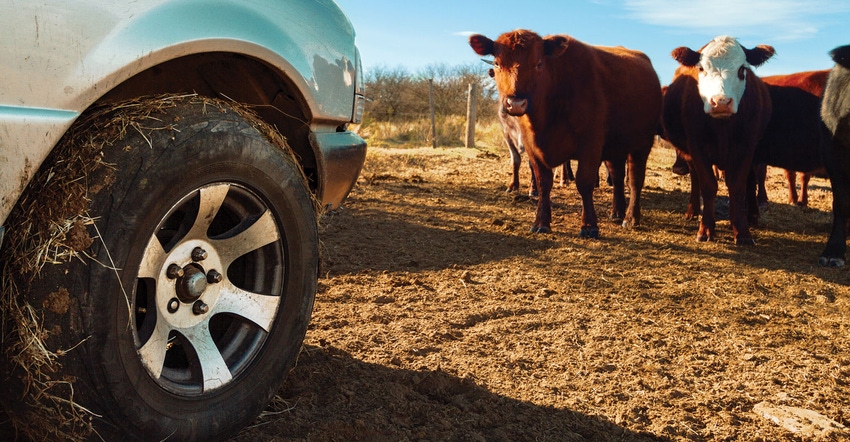How do I price my farm calls?
The ideal solution may be to "blend" a time charge with a mileage charge.

Unless you work in a university doing surgeries, the likelihood is you spend some time driving from one location to another to do vet work. And assuming you do not feel abnormally generous, you likely charge a farm call for this drive. The question that vexes many of us is how do we price this time spent going to the farm?
Of course, the first priority is to cover the costs of your trip. The fuel and oil changes need to be paid for, as well as the wear and tear on the pickup. The component that is more difficult to account for is the opportunity cost for the veterinarian’s service. In a perfect world we’d cover the full hourly rate, but that makes the farm call prohibitively expensive.
As a 2015 AVMA and AABP survey of bovine veterinarians found that 74.3% of veterinarians reported farm calls amounted to less than 10% of their gross revenue, we aren’t looking to make a fortune off farm calls. What then constitutes a fair price that encourages clients to use your services?
What's your time worth?
When driving to another location, the services we complete on the farm are the primary reason we are paid. But our windshield time takes away from work we could be doing on other farms or at the clinic. This opportunity lost to generate other income is considered a cost, hence the term “opportunity cost” is applied to it.
Knowing your practice helps you discover what compensation is required in the farm call to cover your opportunity cost. For example, if you spend the majority of your time processing large groups of cattle, the service charge for the processing on the farm likely covers the opportunity cost of driving. Conversely, if your day is spent going from farm to farm looking at individual sick animals, you’ll go broke if your driving only covers your pickup expenses.
To address opportunity cost, know what your target revenue for an average day is and compare it to how much time you spend driving per day. The price of the farm call should be enough for you to achieve that target. If you spend 25% of your day behind the wheel rather than 10%, then your farm call will need to be more expensive to make up for the opportunity cost.
Per mile or flat rates?
How that farm call is charged is also case dependent. Many clinics charge a flat rate per mile. Farms closer to the clinic take less time to drive to and the client then pays less as a result. This works well most of the time and seems fair.
The problem comes when you have the offer to do a big job a long way from the clinic. For example, you may have a local client who pastures cattle three hours away and wants you the preg check those cows. Would you give up a $2,500 chute job over $75 for a farm call?
A common alternative to address this problem is a flat fee. Usually it is broken into ranges, with an increasing charge per longer range until you reach a maximum level. This works great to land the aforementioned chute job, but what about the times when you are called to drive two hours to pull a calf?
Hybrid systems
Creating a hybrid of these two can help amend some of the negatives. Many clinics will do this and try to get the best of both worlds. An underutilized option to consider is having a herd work farm call and an individual treatment farm call. In this system, there is a maximum value for farm calls to do chute work. However, if the call is to treat 10 head or less, the call can be charged at a different rate. This hybrid leaves the door open for the big jobs, while covering your opportunity cost on the long-distance OB calls.
Determining exactly what farm call pricing and system works for your situation is an individual decision. Factors such as the quality of your clients’ facilities, having your own haul-in facility, the breadth of your practice area and personal preferences all factor in to deciding the best way and amount to charge for a farm call. Once you can strike that balance between covering your opportunity cost for driving while not discouraging people to work with you, you’ll have happy customers and be happy with yourself. At least until gas prices go up again.
About the Author(s)
You May Also Like


.png?width=300&auto=webp&quality=80&disable=upscale)
